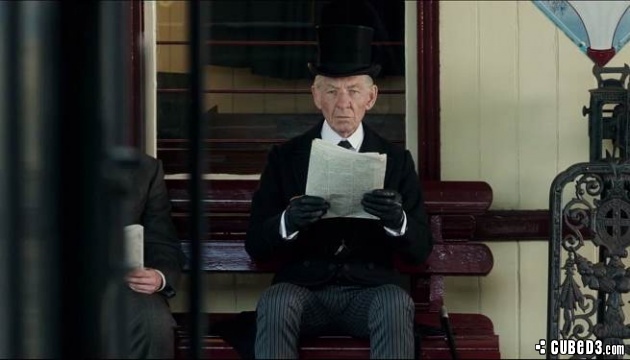
Mr. Holmes (UK Rating: PG)
Everybody has their own image of Sherlock Holmes, be it from TV or in the movies, but they all have one thing in common: they show The Great Detective in his prime, with a brain like a rat trap and extraordinary powers of observation and deduction. Not so in Bill Condon's Mr. Holmes, though, currently on general release - at least, not wholly. After being discussed in this week's Talking Pictures, the full Lights, Camera, Action! review is here.
The setting is 1947, Holmes is 93 and on his own: both his brother Mycroft and old friend John Watson are dead and he's retired to the South Coast, where he lives in a seaside cottage with his housekeeper and her little boy. His memory isn't what it was and he's increasingly frail, but his friendship with the little boy, Roger (Milo Parker) keeps him going. As does a new fascination with his final case, the one that brought about his retirement.
Coping with personal decline is the theme at the heart of the film, something that everybody has to face somewhere along the line. The problem for Holmes, though, is all the more acute because of his intellect and reputation, so he finds ways of disguising it, like writing people's names on his shirt cuffs so that he can refer to them without anybody noticing. It's accentuated by the flashbacks to the younger Holmes, then in his 60s and working on his last case, still sharp of suit and sharp of mind.
Given the film's title, it's no surprise that it belongs to Holmes - and, inevitably, to Ian McKellen, who is outstanding in the title role. He portrays the elderly detective with compassion, realism and respect, holding on to what faculties he has left with as much dignity as he can muster. It's the performance that makes and carries the film, despite a cast that also includes the likes of Roger Allam, Phil Davis, John Sessions, and Frances de la Tour. They are all Brits, of course, but the housekeeper, Mrs Munro, is played by Laura Linney, who sadly struggles with her English accent and doesn't give the audience any real insight into her character until towards the end.

Visually, the film paints an idyllic, almost chocolate box picture of England, with lingering shots of the landscape and close ups of wildlife. The chalk cliffs of the south coast have never looked whiter, and, although the story is set just two years after the end of World War II, the countryside has hardly been touched, with just a few piece of plane wreckage in a field. Also, given that rationing is still in force, Mrs Munro is something of a miracle worker, serving up generous portions of meaty stew.
Very Good - Bronze Award


 Sign In
Sign In 21.06.2015
21.06.2015
 Subscribe to this topic
Subscribe to this topic Features
Features





 Top
Top

